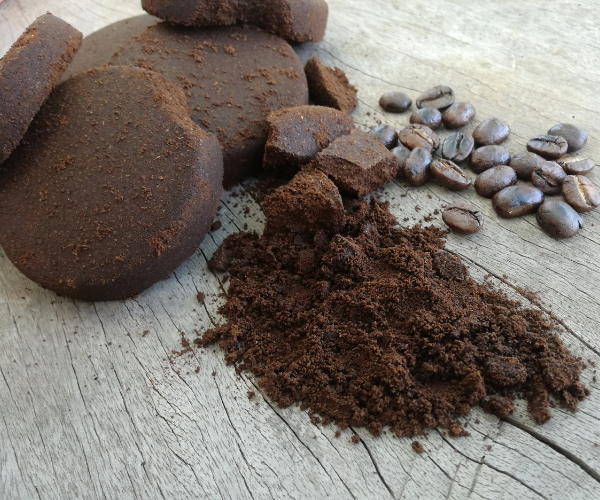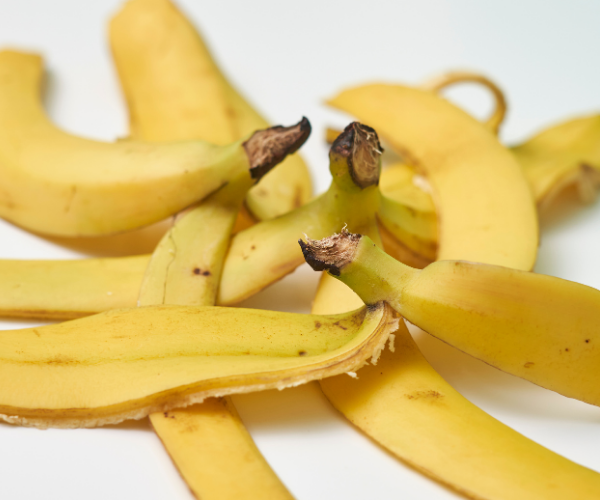Don’t waste those food scraps! Inedible food scraps like carrot tops, coffee grounds, and eggshells have a multitude of uses around your home and garden. Before composting, make sure you’ve gotten the most out of your leftover food items.


Coffee grounds might be one of the most versatile food items that frequently ends up thrown in the trash. These ground up beans are great for plants that love acidic soil, such as roses, hydrangeas, and blueberries. Coffee grounds provide a slow-release source of nitrogen and can improve soil structure by attracting beneficial earthworms. Once you’re done brewing your coffee, spread the coffee grounds over the soil around your plants.
Got a fly problem? Coffee grounds can help with that, too. Flies are repelled by the strong smell of coffee, so sprinkling the grounds in the pots, soil, or grass where you have flies can help deter them.
Coffee grounds also have many uses inside the home as well. They can be used to scour pots and pans, reduce the appearance of scratches on wooden furniture, and neutralize odors. They can also be added to your beauty routine as a natural skin exfoliant.

Like coffee grounds, eggshells have a number of uses around your home and garden. Crushed eggshells can be placed in planting beds and pots to deter slugs and snails while adding calcium and other essential minerals to the soil.
Save your eggshell halves to create biodegradable seed starters! Carefully poke a drainage hole in the bottom of the shell, fill it with soil, add your seed(s), and cover with a light layer of soil. Water the seeds daily and plant the entire shell in the ground or larger pot once the seedlings develop their first leaves.
You can also add eggshells to your dog’s food. Boil the eggshells, let them dry, then grind up the eggshells using a blender or food processor to turn them into a fine powder, then add them to your dog’s regular food! This provides them with a natural calcium supplement.

Another household waste item that has an endless number of uses is the humble banana peel. Banana peels left to soak in a cup of water for 2-3 days create a liquid fertilizer that can be given to indoor and outdoor plants. This solution can also be put in a spray bottle and applied to the leaves of plants to deter aphids. You can also bury the peels, chopped or whole, around a plant infected with aphids to attract beneficial insects that will get rid of them.
Use your peels as a silverware polish. Either rub the inside of the banana peel directly on your tarnished silverware or blend the peel into a paste and apply it with a cloth. The potassium and natural oils break down the tarnish and leave a light sheen. After polishing, rinse the silverware with warm, soapy water to remove any banana residue.
Similarly, banana peels can be used to shine up leather shoes. Rub the inside of the peel on your shoe, paying close attention to scuffs and dull areas, then buff with a cloth. Voila! Your cowboy boots are ready for the next rodeo.
It doesn’t stop there! Banana peels can even be used to soothe pesky mosquito bites. Take a piece of the peel and gently rub the inside of the peel on the bite. Repeat the process until the itching subsides. The peels contain natural oils and anti-inflammatory properties that help relieve itching.

Don’t throw away those peels! Citrus peels can be used to add natural fragrance to your home, make cleaning products, repel pests, and more!
Citrus peels contain a natural compound that breaks down oil and grease. To make a homemade cleaner, put the peels in a jar and submerge them in white vinegar for at least two weeks. Once the time is up, remove the orange peels and you’re ready to start cleaning with the remaining liquid! You can use it at full strength or dilute it with water.
Having people over? Use your leftover peels to freshen up the air. Simmer the peels in water on the stovetop to release a pleasant citrus scent throughout your home.
Citrus peels can also repel garden pests like ants and aphids. Simply place orange or lemon peels around the affected area and let the natural compounds take care of the rest.
You can also keep your peels to make a sweet treat. To make candied peels:

Did you know that you can regrow some herbs and vegetables at home? Green onions, lettuce, basil, rosemary, and others can easily be regrown in a cup of water on a windowsill. Once they’ve grown large enough, you can harvest them for your next recipe or plant them in a garden bed in your backyard where they’ll grow for seasons to come.
Alternatively, you can save your carrot tops, celery ends, onion and garlic skins, and other veggie trimmings in a freezer bag and make a yummy vegetable stock once you have enough!
Wondering what to do with that three-day old baguette? Lucky for you, there are plenty of options! You can make everything from croutons to French toast to gazpacho to bread pudding.
Keep those potato peels from your homemade mashed potatoes and make some delicious potato peel chips! With just three basic ingredients, you can make a savory snack the whole family can enjoy.
If you can’t find any practical uses for your food scraps, add them to your home compost pile. Not composting yet? Read our Methods of Composting blog to help you get started.